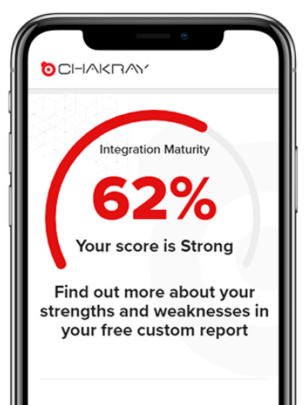During the last 30 years, technological changes have steadily increased. Every year, new technology innovations replace other, more obsolete, which offer a lower ability to address current needs. How can companies adapt to these rapid, sometimes unpredictable changes?
Technology innovations for 2022
2022 is just beginning and experts forecast new technological changes that will be essential in the development of the world of business. The truth is that innovations take place so fast that, in a few months, we will probably witness innovations that we are not even aware of today.
Some new technologies are:
5G
An improved and faster mobile connection will arrive during the next few months of 2022. Companies such as Nokia, Huawei and Ericsson are already working on this network evolution. The development of drones, vehicles and smart cities is also expected to advance.
WIFI 6
This is an ultra-fast connection that includes 5G and will allow for data to be expanded and downloaded up to 3 times faster than today, increasing business capabilities for data governance and its quality.
ANALYTICS
Companies usually handle large amounts of data that is broad and varied. Soon, the development of advanced analytics for a deeper analysis and processing of information is expected to take place, boosting its value in the generation of company profits.
ARTIFICIAL INTELLIGENCE
The use of AI and Machine Learning in 2022 will come in the form of an optimized, error-free analysis of datasets, as well as more intuitive and secure analytics tools.
In addition, artificial intelligence applied to digital conversations will experience a development based on the understanding of emotions and the tracking of complex conversations based on intelligent algorithms.
On the other hand, robotic process automation (RPA) will allow for cost savings in companies thanks to the streamlining of certain computer processes.
BLOCKCHAIN
While currently linked to cryptocurrencies, it is expected to be applied to food safety, property administration and intellectual property soon.
ACPC
Notebooks are expected to turn into Always-Connected-PCs (ACPC) in 2022 with the purpose of maximizing batter use and stop depending on the grid.
UX, XAAS AND PRIVACY
All new technology innovations that we have listed so far can only exist thanks to the implementation of powerful tools such as the XAAS service, User Experience (UX) and data privacy in digital environments.
Overcoming technological changes in your company
In many cases, technology usually faces certain resistance when the time comes to implement them in organizations. A successful change of method may take place rapidly, but new versions, formats or innovations that call for tearing down or significantly modifying acquired knowledge to adapt emerge even faster still.
The value lies in understanding that, inevitably, companies and technology go hand-in-hand. Even if they wanted to get rid of it, this is not always an option when aiming for continuous improvement and a successful presence on the market.
The combination of costs, corporate risks and their complexity are important reasons why companies should stay on top of technological changes and incorporate them if they offer value. It is important to remember that if there is one thing that is permanent in a company, that is change; evolution is an intrinsic characteristic of today’s companies.
When a company is forced to adapt to change, a question pops up: Is it ready to do so? The answer is not simple; it requires analyzing a number of factors that affect the ease or difficulty of the process that comes with change.
Some of them are linked to:
THE ORGANIZATIONAL CULTURE
The paradigms and policies deeply rooted across the entire organizational culture usually lead to a setback or obstacle in the outlook of technological change.
MEMBER ATTITUDE
Undertaking challenges as part of an organization’s activities requires its members to be predisposed to undertake and sustain them by means of an outlook oriented toward continuous improvement.
However, this is not always the case. A large number of companies experience a reluctance to implement technology. This is an essential effort that directives must encourage when the time comes to transform the reluctance of employees.
KNOWLEDGE
The lack of knowledge regarding new technological innovations is a common hindrance, and it must be eradicated through efficient communication and internal training where members can dispel their doubts and get to know the benefits to the new technology so that it can be used and applied to their own, and the company’s, benefit.
GENERATIONAL RELUCTANCE
Companies that have older workers may experience more reluctance regarding the addition of new technology.
CONFIDENCE
Despite its multiple benefits, technology can lead to certain feelings of insecurity, which is detrimental to the company and its workers.
There are many cases where and advance has made employees feel that the innovations might replace their added value in the workplace. Nothing could be further from the truth. Technology requires employees even more for its control and operation.
Once the most important factors of reluctance to change have been identified, companies have the challenge of implementing the necessary strategies to identify problems and manage an adequate internal communication that informs employees that the technological change is an opportunity for personal and organizational growth.
To do this, one must consider the following aspects:
Mentoring actions: This method is effective toward the acceptance of new technologies, since it offers the most reluctant employees the support of a peer who progressively allows them to understand the need for the modification. The process includes motivation, incentive and visualization of the benefits; the provision of sufficient time to adapt; fostering support among employees; listening and continuous assistance.
Training: The best method to achieve adaptation is training workers in regard to the technology to be implemented. Knowledge is a key tool to accomplish change, not only in regard to technical or operational matters, but also to deeper ones, such as raising awareness regarding the use of new technological tools for everyone’s benefit.








